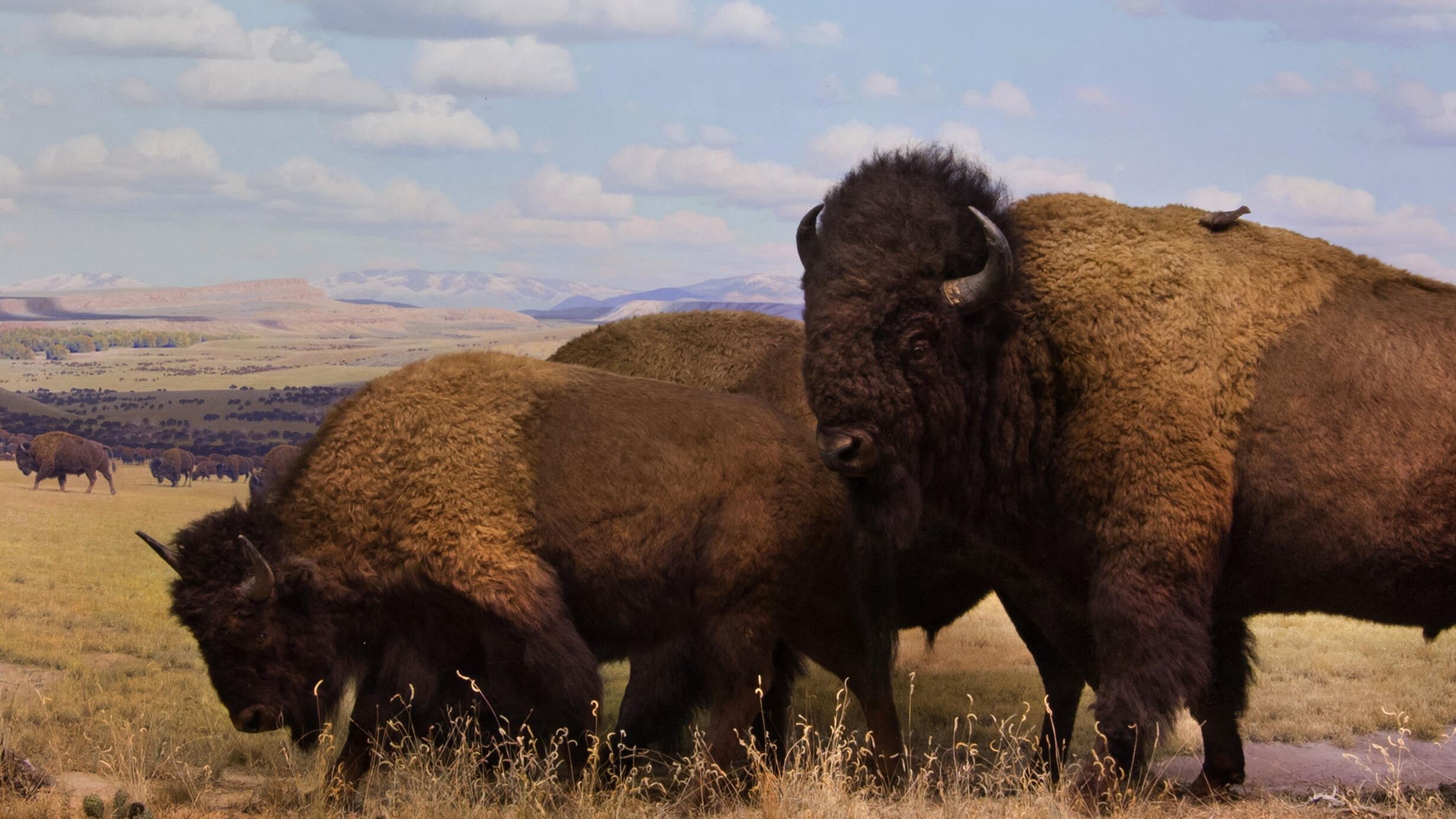AMNH Launches New Virtual Field Trips
 American Bison diorama in the Hall of North American Mammals.
American Bison diorama in the Hall of North American Mammals.D. Finnin/© AMNH
New tours provide teachers and parents with customizable, easy-to-use, online learning explorations for students based on iconic Museum galleries.
Today the American Museum of Natural History announced Virtual Field Trips, a new educational initiative that allows students to engage with Museum exhibits remotely and to complete activities to gain scientific knowledge, with materials to support teachers or parents in standards-aligned instruction. Virtual Field Trips, which are based on virtual hall tours of Museum galleries on Google Arts and Culture, allow students to locate, view, and explore specific Museum exhibits, complete a core Student Investigation, and engage in extension activities like reading and writing tasks based on Museum exhibits.
The Museum is one of New York City’s top field trip destinations and, as part of its core mission to support science learning for school children, last year welcomed approximately 400,000 school children with teachers and chaperones as part of a school or camp group. The launch of Virtual Field Trips comes as Mayor Bill de Blasio announced that the City is working with private partners, libraries, and museums to create new resources and activities to keep students engaged during the rest of the academic school year and summer as teaching and learning have been severely disrupted by the COVID-19 pandemic.
The Museum’s Virtual Field Trips are launching today with two modules, with more to follow. The first—a field trip to the Museum’s Bernard Family Hall of North American Mammals—is designed for students in grades 3-5, who will be able to explore historic habitat dioramas to learn about animal adaptions to their environment. The second offers middle school students in grades 6 through 8 a virtual visit to the Gottesman Hall of Planet Earth, and focuses on teaching how plate tectonics can explain Earth formations like ocean basins and continents. Explorations are aligned to Common Core, New York State Science Core Curriculum, and Next Generation Science Standards, and are customizable, allowing teachers to devote one class period to the trip or assign additional activities to extend it over two or more periods.
Virtual Field Trips are part of a comprehensive portfolio of education programming offered by the Museum to support science learning and teaching, including Educator’s Guides for galleries and special exhibitions; OLogy, the Museum’s science website for kids; courses on Khan Academy, and quizzes on the educational platform Kahoot.
In addition, the Museum plays a leadership role in Urban Advantage, a consortium of New York science institutions that work with the New York City Department of Education to support science learning and teaching in more than one half of schools with middle grades across the five boroughs. Through its Richard Gilder Graduate School, the Museum is also home to the Master of Arts in Teaching program, which to date has produced over 100 newly certified Earth science teachers now teaching in high-need schools across New York State. The Museum’s professional development opportunities for teachers include professional learning opportunities from the Gottesman Center, the Seminars on Science online program, courses on the massive online open course platform Coursera, and a range of other resources.
While the Museum has closed its buildings during the COVID-19 pandemic, it has continued to offer educational resources online, with amnh.org/explore serving as a hub for regularly updated content. Among the offerings, the Museum is hosting weekly, live online programs on topics ranging from deep ocean biology to planetary science. In addition to opportunities to visit virtually through Google Arts and Culture, the Museum is sharing previously recorded guided tours of halls and collections weekly on Facebook. Audiences can also stay connected with the Museum on Instagram at @AMNH, on Twitter at @AMNH, on Facebook at facebook.com/naturalhistory, and on Tumblr at amnhnyc.